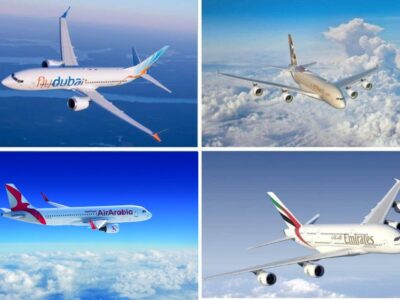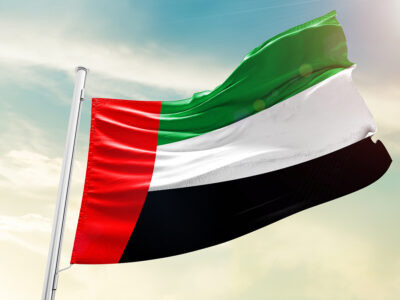As the head of the world’s biggest hotel operator visiting a country with only two internationally-branded hotels – both of which opened this year – Arne Sorenson attracts a celebrity-like welcome to Kigali, Rwanda.
The CEO of Marriott International has just closed a game-changing, $13.6bn acquisition of Starwood Hotels and Resorts and is in the African capital to launch the first Marriott hotel there. The opening coincides with the Africa Hotel Investment Forum (AHIF), during which Sorenson is whisked off stage and into a meeting with Rwandan President Paul Kagame.
The naturally demure American may be one of the most powerful men in the hotel industry globally but he would never have you believe it. Evenly spoken, he offers a generous observation of one Africa’s longest serving democratically-elected leaders.
“It’s so gratifying to listen to him because he’s very thoughtful, there’s little arrogance and he’s got his ears open,” Sorenson says of Kagame as we sit down immediately after their meeting.
Marriott’s takeover of Starwood has doubled its presence in Africa and the Middle East. It now has 1.1 million rooms in 5,700 properties across more than 110 countries, with another 285,000 rooms in the pipeline.
It is an enormous leap from the first hotel opened by Marriott’s founder John Willard Marriott in Arlington, Virginia in 1957.
But the Maryland, US-based Marriott is picking up Starwood just as it turns to a loss. In July, Starwood reported a loss of $263m during the second quarter of 2016, compared with a profit of $136m a year earlier. Part of the downfall was attributed to a $202m cumulative foreign-currency translation adjustment loss associated with its historical hotel operations in Italy, but even excluding that sum the hotelier’s performance had fallen.
Asset-light Marriott’s finances, meanwhile, have remained strong as it adds thousands of new rooms each quarter. It reported a $247m profit during the second quarter, up from $240m a year earlier. The new Marriott, including Starwood properties, is due to release its third quarter results on November 7.
Sorenson insists the Starwood deal – which saw Hyatt and China’s Anbang drop out of the bidding – brings benefits for all three of the new giant’s stakeholders: staff (of which there are now half-a-million globally), guests and owners (Marriott does not own any of the hotels it operates).

Marriott is relocating its headquarters in Bethesda, Maryland.
The very first move made once the deal was closed on September 23 was to allay fears that millions of loyalty programme members, particularly those of Starwood Preferred Guest, would lose any of their benefits. Rather, Marriott immediately allowed members to use their points at any of the combined hotels while it prepares to integrate the programmes, expected to take until 2018.
Both brands’ strong followings would be one of the incorporated company’s strengths going forward, Sorenson says. The increase in size would only draw more guests, particularly to and from areas where Marriott’s presence had significantly grown, such as the Middle East.
“Having that distribution helps us get local members who are travelling within and travelling away and it helps us offer choices for people who are travelling into those markets, and I think that is a huge impact long-term,” Sorenson says.
Hotel owners, too, will benefit from potential collaboration and consolidation of services, he says. Marriott owns few of the properties it operates so having owners on side is critical to the success of the deal.
“With some economics of scale we should be able to drive through not only the top line, with a stronger proposition for our customers, but we should be able to drive improved profitability margins by offering some services on a more efficient basis than we’ve been able to do so far.”
Closer ties between brands also could elevate Dubai to compete against the likes of Las Vegas to host some of the biggest world gatherings, including financial or medical conferences, global product launches and customer events held by large international brands. The most likely to benefit are the JW Marriott Marquis (the world’s tallest hotel) and the three hotels nearby in the Al Habtoor City development.
“You’ve got the Marriott Marquis with 1,600 rooms and then roughly 1,600 rooms combined between the Westin, the W and the St Regis across the canal – each with substantial food and beverage outlets, each with substantial meeting space,” Sorenson says.
“I think they’ll pitch jointly for bigger events, where 1,600 rooms might not be enough by itself. You’re talking about substantial pieces of business, where you can say, we can host your business in Dubai – there’s great airlift, great centrality, particularly for a global meeting.
“If you’re talking about people in Europe and Asia meeting together, the emirates and the GCC markets are a very strong place to do that. There are relatively few places in the world where you can get a 3,000-4,000 room block right there. Vegas is one and Vegas does a lot of huge global meetings.”

Arne Sorenson, renown for his demure demeanour, insists the Marriott takeover of Starwood will benefit guests, owners and staff.
Las Vegas is the largest MICE market in the world, with 22,000 meetings and 5 million attendees in 2014, according to the Las Vegas Convention and Visitors Authority. It has a total of 40 million visitors a year.
But Sorenson says Dubai has some advantages, particularly its geographical location and ease of entry.
“For a global group, sometimes getting into the US is difficult. So if Dubai says we’re going to provide this great airlift and make it easier for people to enter Dubai, I think it makes them more competitive. It’s not that they haven’t been competitive – there are obviously a lot of big hotels in Dubai and there are a lot of hotel rooms in Dubai but I think it’s another strength,” he says.
But Sorenson counters some industry concerns that Marriott’s stronger position will allow it to drive down corporate rates.
“Why? Not only is it not the motivation for the deal but our industry is highly transparent in pricing, highly diverse and, remember, yes we may be the biggest player in the hotel business, [but] we have one out of 15 rooms in the world, that’s it, 6 percent, I think. And half of those rooms are franchised, so we don’t even price those rooms, they’re priced by our partners,” he says.
“That means we don’t think we have the power to go into a negotiation with a special corporate customer or special group of customers and set prices in a way which is somehow not impacted by what’s happening in the market generally.
“[However], we do think we can drive occupancy because we think by offering greater choices to our customers we should be able to get a greater share of their travel dollars by having them stay with us more often.”
In the GCC, the bigger Marriott has 84 hotels, with 25,802 rooms. In several markets that means similarly-placed brands (such as The Ritz-Carlton and St. Regis; Sheraton and Marriott; and Le Méridien and Renaissance) will be competing against each other, but Sorenson does not expect any brand consolidation in the GCC, although he is careful not to rule it out.
“There could be some rebranding of an individual asset here and there but I don’t think it’s likely to be terribly significant and I don’t have any hotels in mind,” he says, eager to reassure owners. “We do think we’ll keep the brands that we have because owners have invested in them and because we want to offer more choice, not less choice. Those are the two principle reasons [not to consolidate].

The JW Marriott Marquis Dubai penthouse is the tallest in the world.
“[However], we do think over time we’ve got to make sure we define swim lanes, if you will, between those brands so that they have some distinction between one from another.
“And as that evolves – and that will be a process that’s shared with our owners and franchisees because they’re keenly interested in this and want to have input and we want them to have input – we may find that there’s some hotels that actually fit better in a different brand than the one they’re in today. But I would think that that would be a few handfuls of hotels globally, so not very significant.
“Those will be questions that require customer research, require hotel owners’ involvement and, ultimately, they will result in the further definition of some brand standards [and] the implementation of those brand standards, which we will need to give owners some time to meet. So that’s a year-long process; a process we can probably never say is done. But at the same time, I suspect it’ll be two or three years in any event before we can say we’re starting to make significant progress towards the direction we want to go.”
While it critiques the definitions of its current brands, Marriott will be not only assessing the quality of bedding or food and beverage offerings, but also how new technology and modern design can transform the entire customer experience.
The company has often been progressive (for example, it was the first international hotelier to allow customers to book online in 1995) and it has many new ideas up its sleeve as it approaches its sixtieth anniversary in 2017.
They include allowing guests to order room service – whether that be food or a fresh pillow – from their smart phone or access on-demand fitness classes either on a big screen in the hotel gym, in the guest’s room or on their phone. Phones also will be used for keyless entry, as well as check-in and check-out services.
Specific brands within Marriott’s stable also are shaking up the idea of hotel design, creating more communal spaces and local features that better immerse a guest into the city they’re visiting.
Marriott is also tackling ‘disruptors’, which Sorenson says does not only refer to the likes of Airbnb, but also booking websites and the new experimental Google Hotel Finder.
Speaking during AHIF in Rwanda, Sorenson says gaining strength over third party sites was a key incentive to bid for Starwood. Hotel companies’ size is critical when negotiating fees with online travel agents (OTAs), who are fast becoming the preferred booking method for savvy travellers. Hotels typically pay between 10-25 percent of their room revenue to OTAs, but bigger companies have greater negotiating power, while also being able to drive more reservation business to their own websites.

Sorenson described the opening of the Kigali Marriott Hotel as “transformative” for the country.
“We got smarter over the course of 2015 about the threat of disruptors to the industry,” Sorenson told AHIF.
“With each passing day in that space I think it became clear to us that having a big loyalty programme that gave us the ability to have relationships directly with a larger share of our customer base was the best moat we could build around the castle, if you will, to help us perform well.”
Sorenson says online booking sites have helped increase business from irregular travellers less educated about brand options, but over the past decade they had worked to break through the direct relationship between a hotel brand and its customers.
“And the amount of advertisement that’s being spent on OTAs causes many customers to think they get better rates on OTAs than they do on brand.com sites, which hasn’t been the case for a decade,” Sorenson adds. “Our systems are run so that it’s the same rate on every channel at the same time, but that popular perception is out there.
“So even before the acquisition of Starwood we’ve been trying to break through that clutter and say not only will you get points if you book directly with us, and you won’t if you [book through] OTAs but you’ll get free Wi-Fi and mobile services, and you’ll get remote check-in and keyless entry. And more recently, you’ll get a discounted rate. The discounted rate is probably the most interesting piece of that, but it’s the most powerful way to cut through that perception that rates are somehow better through those channels. It is in your interests, it’s obvious that it’s in your interest, to have a relationship with us, particularly if you’re going to travel frequently.”
Marriott is also working to build up relationships with locals in the GCC as the region places greater emphasis on the nationalisation of its workforce. While nationals of some GCC states have been reluctant to enter the services industry, Sorenson says quotas in Saudi Arabia have been the hardest to meet.
“Saudi would probably be among the places where we spend the most time talking about workforce issues,” Sorenson says. “The conversations that I’ve been involved in continue to focus on local hire requirements that we’ve got and trying to meet 35 percent [of the workforce filled by Saudis]. To do that is going to require us to make sure we’re working with local schools and deal with the training and with the long-term need to make sure that that workforce is met.
“We’re meeting the requirements; there is hope in all of this.”
In the GCC, Marriott is also juggling the impact of the lower oil price. Sorenson says there are fewer business and leisure travellers from and to oil-hit markets such as Saudi Arabia, but China and India continue to feed the region’s hotels.
“The weakness in oil prices is obviously, near-term, a powerful impact in some markets. So the level of business travel, business investment has been reduced, which does have an impact on the level of hotel stay and to some extent, the level of hotel development,” he says.
Such on-the-ground issues will add extra complexity to Sorenson’s future strategy, now that the dust has settled on the biggest business decision in Marriot’s history.








